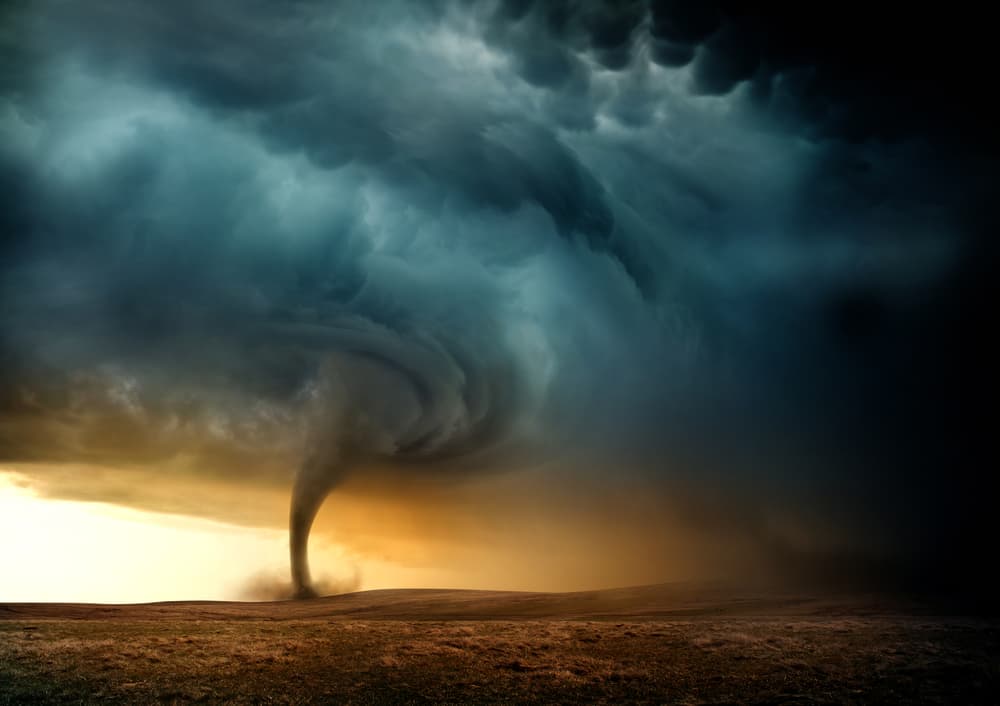How to Survive a Twister with these 5 Tornado Safety Tips

Table of Contents
The United States is the most tornado-prone country on the planet. Due to a mixture of land features like strategically-placed plains and mountains, proximity to a warm and moist Gulf of Mexico, and a position halfway between the warm equator and the cold North Pole, the US is a veritable battle zone of dangerous weather: blizzards, flash floods, ice storms, hurricanes, droughts, and the dreaded tornado. How do you survive a tornado? What tornado safety tips will actually keep you and your family safe?
How to Survive a Twister with these 5 Tornado Safety Tips
On March 3, 2019 a violent tornado almost a mile-wide, with winds approaching 170 miles an hour, tracked across southeastern Alabama, killing 23 and ranking as the deadliest U.S. tornado in the last five years. Entire swaths of forest were blown down and homes were completely demolished. But most people in the twister’s path survived.
Here’s how you can survive a twister with 5 simple tornado survival tips.
1. Have Multiple Ways of Receiving the Tornado Warning
The first tip for tornado safety is a reliable way to receive a tornado warning. The following will automatically alert you when a tornado warning is issued for your area. Make sure you have at least three:
- Wireless Emergency Alerts on your smart phone
- Text messages to your smart phone, or voice messages to your landline phone from your county emergency manager, your local broadcaster, or a call service such as WeatherCall
- Live broadcasts on TV and radio
- Reliable phone apps
- Outdoor tornado sirens
2. Have a Plan
Everyone in your family should know how to react when a warning is issued, including where to seek shelter. Children should be taught at school and at home how to seek shelter, and where. They should know how to do this regardless of whether their parents are home at the time.
During the May 3, 1999 tornado outbreak in central Oklahoma there were no fatalities under the age of 18, even though the twisters struck at a time when kids were home from school but before parents hadn’t gotten home from work. Why? The kids knew what to do when a tornado warning was issued, and they took shelter…immediately.
3. Have a Shelter or Safe Space
Your best bet is a certified storm shelter, either an above-ground steel or concrete structure (easier for the elderly to get into and out of), or a below-ground shelter. Even in a violent tornado, survival can be certain if you’re in an approved shelter.
No storm shelter? Your safest bet is to get down low, away from windows, and in a place that puts multiple walls between you and the tornado: interior rooms, closets, or baths. Wherever your shelter, protect your head. Many tornado fatalities are due to head or neck trauma, so when you take shelter, put on a bicycle helmet or cover yourself with a mattress or tub.
4. Have a Kit
An emergency kit is not just a safety tip for tornadoes, but all severe weather really. It should include some water and food, but also first aid essentials, because you may need to take care of yourself or your neighbors. In the aftermath of the 2011 Joplin, Missouri tornado it took first responders almost an hour to make their way into the center of the tornado’s path, due to the overwhelming number of injuries.
Will you be able to stop bleeding and stabilize an injury until first responders arrive? Be ready. Have a first aid kit, a flashlight, a wrench to turn off the gas, an extra pair of shoes, and some work gloves. If your home is damaged, you’ll be on your own until help arrives.
5. Be Aware
If you live in tornado-prone areas, make it a habit to watch the TV weather forecast morning and evening. If they mention a risk of severe weather, make a mental note that storms are possible, and keep a tab on your phone, your NOAA Weather Radio, or commercial broadcasts.
If a tornado watch is issued, indicating the possibility of bad storms, be prepared to adjust your plans by bringing outdoor events inside, or cancelling them if need be. A “watch” is a tap on the shoulder to be on guard. A “warning” is a kick in the seat to get you to your shelter. When the warning is issued, take it seriously and move to your safe spot, as seconds truly count. If there’s no tornado, and it’s a false alarm, congratulations! You’ve just completed an excellent practice drill and can give everyone in your family a pat on the back.
Even in “tornado alley” the risk of your home ever being hit by a tornado is very, very low. But you should still be prepared. Those who are prepared and follow proper tornado safety tips have a much better chance of surviving if a tornado does strike.
If you find the power and ferocity tornadoes fascinating, then plan a storm chasing tour with professionals who will help you experience tornadoes safely.


